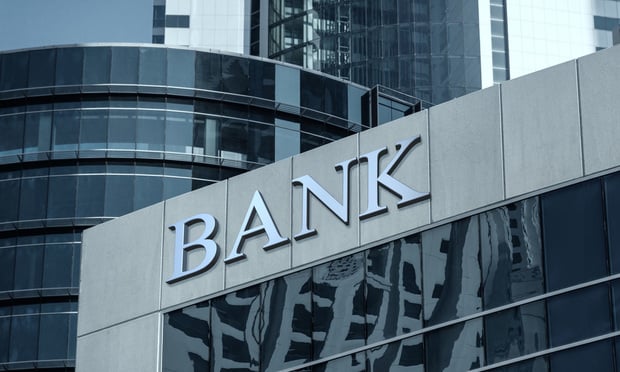Owners of manufactured housing communities saw a number of changes in 2016. That is according to Carl Pankratz, VP of Hunt Mortgage Group. In the exclusive commentary below, Pankratz says that with better debt options and the increased interest of equity in the space, owners saw a rise in value as well as very competitive terms in their financing.
The views expressed below are the author's own.
Communities deemed “3 star” saw an uptick in desirability, as both Fannie Mae and Freddie Mac became comfortable with financing products in some markets where amenities are not commonplace. Moreover, the allowance of park owned homes increased from 25% to 35% in some cases, making agency financing very attractive. Unfortunately, chattel financing continues to be a drag on the overall market, leaving many community owners in the position of personally financing homes. This issue may make it difficult to fill existing communities; however, with the availability of debt at competitive loan-to-value ratios, operators are continuing to look to cash-out refinances for available capital. The industry has significant momentum entering into 2017.
Fueled by a desire to seek affordable housing, both Fannie and Freddie aggressively entered the space and offered significant competition to CMBS financing. In 2015, as Fannie and Freddie approached their spending caps, they identified several asset classes to exclude from their base lending parameters. Because of the overall affordable nature of the product, manufactured housing communities were one of the asset classes selected for cap exemption. Being excluded from their spending cap substantially increased the desirability to both Fannie and Freddie, netting community owners competitive pricing, better procedures, and better loan options. Manufactured housing community owners, who previously used only CMBS, are now receiving better quotes via Fannie and Freddie structures. Fannie and Freddie both offer: 30-year amortizations, fixed or adjustable executions, and availability of interest only, all on a non-recourse basis. They also offer a “supplemental loan” option allowing for a second loan in subsequent years, (i.e., a second bite at the apple) to reward operators that achieve NOI growth. This supplemental loan can be used to cash out investors or make property improvements.
Some of the items both agencies look for when underwriting manufactured housing communities include: paved streets, off-street parking, on-site office, operational history of owner, ratio of park owned homes, newer homes being brought in/ages of homes, little to no dead end streets, no chain link fences, and the number of double wide pads. Amenities are not necessarily required if you are in a market where they are not common. These underwriting factors represent the ideal characteristics that Fannie and Freddie like to see; however, all deals are reviewed on a case-by-case basis.
Heading into 2017, Fannie and Freddie will continue to be focused on affordable/workforce housing. This focus will in turn create attractive terms to community owners seeking to acquire new properties or refinance existing product. While rental units across the country experience increases in rates, manufactured housing communities offer residents a community feel at a much lower price point. Homes continue to become more energy efficient, and amenities can include fireplaces, marble counters, and valet trash pickup. All of these factors present a positive outlook for the industry heading into 2017.
Owners of manufactured housing communities saw a number of changes in 2016. That is according to Carl Pankratz, VP of Hunt Mortgage Group. In the exclusive commentary below, Pankratz says that with better debt options and the increased interest of equity in the space, owners saw a rise in value as well as very competitive terms in their financing.
The views expressed below are the author's own.
Communities deemed “3 star” saw an uptick in desirability, as both
Fueled by a desire to seek affordable housing, both Fannie and Freddie aggressively entered the space and offered significant competition to CMBS financing. In 2015, as Fannie and Freddie approached their spending caps, they identified several asset classes to exclude from their base lending parameters. Because of the overall affordable nature of the product, manufactured housing communities were one of the asset classes selected for cap exemption. Being excluded from their spending cap substantially increased the desirability to both Fannie and Freddie, netting community owners competitive pricing, better procedures, and better loan options. Manufactured housing community owners, who previously used only CMBS, are now receiving better quotes via Fannie and Freddie structures. Fannie and Freddie both offer: 30-year amortizations, fixed or adjustable executions, and availability of interest only, all on a non-recourse basis. They also offer a “supplemental loan” option allowing for a second loan in subsequent years, (i.e., a second bite at the apple) to reward operators that achieve NOI growth. This supplemental loan can be used to cash out investors or make property improvements.
Some of the items both agencies look for when underwriting manufactured housing communities include: paved streets, off-street parking, on-site office, operational history of owner, ratio of park owned homes, newer homes being brought in/ages of homes, little to no dead end streets, no chain link fences, and the number of double wide pads. Amenities are not necessarily required if you are in a market where they are not common. These underwriting factors represent the ideal characteristics that Fannie and Freddie like to see; however, all deals are reviewed on a case-by-case basis.
Heading into 2017, Fannie and Freddie will continue to be focused on affordable/workforce housing. This focus will in turn create attractive terms to community owners seeking to acquire new properties or refinance existing product. While rental units across the country experience increases in rates, manufactured housing communities offer residents a community feel at a much lower price point. Homes continue to become more energy efficient, and amenities can include fireplaces, marble counters, and valet trash pickup. All of these factors present a positive outlook for the industry heading into 2017.
Continue Reading for Free
Register and gain access to:
- Breaking commercial real estate news and analysis, on-site and via our newsletters and custom alerts
- Educational webcasts, white papers, and ebooks from industry thought leaders
- Critical coverage of the property casualty insurance and financial advisory markets on our other ALM sites, PropertyCasualty360 and ThinkAdvisor
Already have an account? Sign In Now
© 2024 ALM Global, LLC, All Rights Reserved. Request academic re-use from www.copyright.com. All other uses, submit a request to [email protected]. For more information visit Asset & Logo Licensing.









